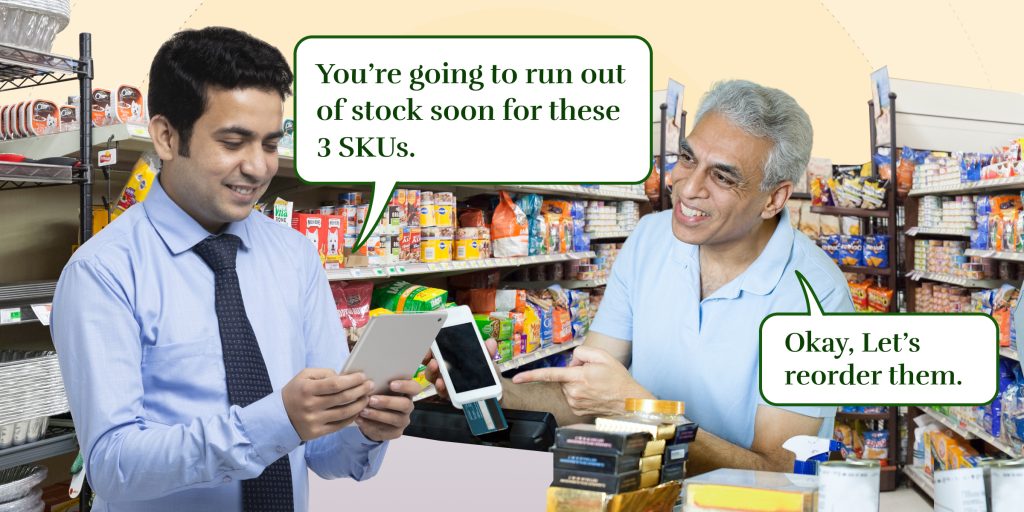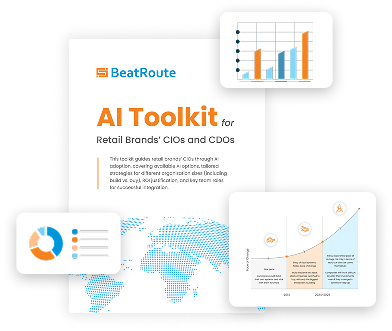How An Effective Retail Audit Can Do Wonders For Your Brand

The products you create have a purpose – they need to reach consumers who will use them and then, hopefully, come back for more. This is possible through retail stores which are not only responsible for putting up your offerings on shelves but also in a way that promotes visibility. After all, something that isn’t apparent to in-store visitors is something that won’t be sold. And there goes your bottomline!
To keep up, we have the retail audit; a mandatory assessment of factors like product placement, share of shelf, and planogram. The benefits such visibility, data gathering, and analysis brings to your brand in terms of inventory management, in-store merchandising, and customer engagement are enormous.
This article is written to give you a complete picture of what a retail audit is, how it works, and how it benefits you. Once you have read through, you will have a far better idea of why and how to leverage retail auditing for your business.
What is a Retail Audit?
A retail audit is the process that a brand undertakes to understand if a retail outlet is placing and promoting its products according to predefined brand guidelines and if these standards are indeed beneficial to the brand. It’s a periodic assessment to document what’s working and what’s not to be able to adapt, recover losses, and do better going forward.
What Are The Different Types of Retail Audit?
A successful retail audit may comprise multiple categories or steps to be completed on the same visit or on different visits. This means that an audit is a fairly complex process encompassing every aspect of a retail store with respect to a product. It touches a lot of points from customers to inventory to merchandising to more. And with a powerful and dependable AI-backed tool, your auditors can get on with and complete their work quicker!
- Merchandising Audit
As the name may suggest, this is about checking how the products are placed in the store, the lighting at the right spots, shelf space allocation, signage, pricing and if it’s visible at first glance, and the visual appeal of the space. The goal is of course to make your products as eye-catching as possible while also ensuring that the store manager and representatives are well-apprised of the products. A smart visual merchandising tool backed by AI processes can make the whole thing more efficient.
- Competitor Audit
Your competitors have their own strategies that keep their products relevant. Understanding these tactics during audit by looking at their product placements and signage provides your brand with important insights on how to improve your own in-store strategy.
- Inventory Audit
Stock outages can severely stall your retail performance and inventory management is indispensable for this. Inventory audits allow for a comparison between stock on record and the actual stock in the store. Auditing for inventory ensures that any discrepancy is promptly addressed and stores remain stocked with your products at all times, while also avoiding overstocking.
- Marketing Audit
Marketing is an important driver allowing your brand to be more visible and enticing customers towards your products. It is therefore equally important as other audits to audit your marketing efforts and to assess the brand’s marketing strategies and activities within the retail environment. It all boils down to your efforts reaching your audience and also brand visibility, leading to favourable business results.
- Promotion Audit
You must conduct audits focused on your promotions to assess and in the process, evaluate how your current promotions are doing in the market. This includes checking if discounts, sales promotions, and even marketing campaigns are implemented properly and how the consumers are taking to them.
- Quality Audit
Without quality, simply having your products in-store wouldn’t help. Quality control involves everything quality-wise from seal tampering to damaged body to expired products. These may result from mishandling or carelessness. This is important to maintain a positive brand image along with sustained customer satisfaction.
- Brand Image Audit
Elements such as store aesthetics, lighting, ambiance, and even space may contribute to the brand image. In a way, it’s the culmination of all the other audits and therefore special attention needs to be paid here to keep your brand pristine and dependable.
- Consumer Satisfaction Audit
In the end, it’s all about the consumers – how they see your product, how they like it and if they would come back for more. This squarely depends on how helpful the store has been to consumers regarding your products, how your product promoters have been operating, and how easily you have received consumer feedback from stores. Consumer experience is crucial and although you may think that your responsibility transfers over to the retailer after primary or secondary sales, you are the only one who can work to improve your product if necessary.
Benefits of a Retail Audit
Naturally, the evident seriousness of a retail audit must bring with it a variety of benefits that make auditing worthwhile. We dive into these below.
- Cooperation among channel partners
Retail audits involve the full cooperation of retailers with brands ensuring that brands can make sure that retailers properly adhere to the terms of the partnership. These terms may include signage to product placement to hygiene to in-store space, etc. This can act as the best task management solution for businesses.
- Data gathering precision
A primary function of retail audit is to gather data from the customer, archive them, and then utilise them towards finding what works, rectifying errors, and strengthening weak points. Such precise data can pay dividends to a brand in the future in terms of predicting mistakes, avoiding pitfalls, and staying ahead of the competition.
- Cost savings and sales boost
Adequate auditing has the potential to anticipate issues and fix them instead of running with them day in and day out. When factors like consumer satisfaction or inventory management are taken care of, your sales go up and you save up on damage control measures later on such as recalling a product from all stores.
- Improved customer experience
Your retailers or B2B customers, are your channel partners responsible for buying from you and taking your products to consumers. When you carry out proper audits, you ensure that your products, promotions, inventory, and merchandising are genuinely effective. This helps their business as they get to sell your products better, witness demand generation for what you offer, and make a hefty revenue on their end as well. At the same time, auditing is also about feedback and when you receive and act on it, it makes you dependable in the eyes of retailers.
Mistakes to Avoid During A Retail Audit
Considering the relationship of retail audit with brand success, it is important to also identify what constitutes mistakes during auditing and avoid them.
- Mistake 1
Lack of clear objectives and/or defined guidelines to meet those objectives that lead to confusion and inadequate auditing.
Solution: Objectives must be clearly set down along with the criteria to meet them for auditors to double check when needed. This will allow for accurate auditing via consistently good data collection.
- Mistake 2
Your auditors aren’t trained on what they are supposed to accomplish and how they should go about it.
Solution: Train them on how your audit happens, your products, and any technology they’d need to harness to complete a successful audit.
- Mistake 3
Auditing a few stores or deliberately skipping store audits that can lead to a skewed analysis.
Solution: The sample size should be large and of variety; include different classes and locations to paint a more complete picture of brand performance. This will better inform you about your areas of improvement and how to come up with a solution.
- Mistake 4
Manual reliance for data collection, accuracy and integrity, leading to highly unpredictable results.
Solution: Instead, put your reliance on technology and software such as BeatRoute, that possess high-end retail auditing features. You will find that such an approach will not only streamline real-time data gathering but also eliminate human error.
- Mistake 5
Considering retail audits as simply evaluative and being robotic with data gathering instead of keeping retailers in the loop and nurturing customer relationships.
Solution: Use your relationships with the retailers as the backbone to your efforts towards a retail audit. Make it a collaborative effort where you share your findings with retailers in a constructive fashion and bring about improvement together.
Best Practices of Retail Audit
Best practices are what make any auditing process successful. They are formulated from past mistakes and current insights to ensure a retail audit is as effective as possible.
- Pre-determine how to collect data
Shooting in the dark is never a winning strategy. But that’s exactly what happens when you don’t plan what data needs to be gathered and the methodology behind it. It is important that you go over processes regarding inventory management, financial records, and documenting customer interactions. Determine the data you are looking for and come up with an effective method to capture it. Your auditors may use software to document and analyse data, interview employees or both!
- Find and use an effective retail audit software
Your auditors will be working in the field, going to stores and checking out how every parameter from promotions to merchandising to customer satisfaction is performing. A tool like BeatRoute equips you with comprehensive auditing capabilities with versatile input options and KPIs and allows for complete transparency from the auditor level to their managers to the brand itself. The ability to maintain detailed records in a mobile format such as on an app is the surest way to capture, analyse, and act upon audit data.
Look for a tool that allows you to click photos as an accessory to audit reports for clarity and prompt action. At the same time, software scalability plays a big part in conducting effective audits as all brands have different requirements and sizes. A software adaptable to variations and at the same time, one that also possesses modular capabilities is the perfect candidate for your retail audit software.
For example, if an auditor sees a product misplaced or a damaged item placed on shelves or observes any other disparity, a photograph represents an irreproachable proof of the same to brand HQ or whomever is in charge. We have a proprietary “shelf eye” technology, which is a massive help to brands in this regard where it automatically tracks planogram or other anomalies on shelves and enables easy documentation.
- Digitise and standardise forms
Digital forms are the best bet to record information as paper tends to get lost or spoiled with time. Create standardised forms that are easily and quickly scannable while at the same time comprehensive and leaves room for additional data. The forms should contain detailed checklists encompassing every aspect of the auditing process and provide a clear picture to the brand.
- Communicate date, time, and duration of audit
Having a duration, date and time in mind for the audit, discussing it with your retailers, and finalising once all parties are in agreement is crucial. A lack of communication here could spell disaster as multiple disruptions could occur from unplanned or uncommunicated activities.
For example, if it’s the season for a product type that brings in a lot more footfall than usual, setting up an audit during such a period could mean missed opportunities for the retailer or an inadequate audit in all the commotion.
Either way, it serves no purpose to anybody to harm sales or an audit. All audits should therefore be carefully planned after meetings with retailers and the time should always be a mutually acceptable one.
Trust Us for Your Retail Audit
There is no shortage of options when you go shopping for retail auditing tools. But to actually acquire a tool or software that’s both efficient and reliable – that’s another story. That’s where we ask you to trust BeatRoute; proprietary shelf eye tech, highly scalable, modular for keeping it simple and relevant, and a strong focus on collaborative automation that allows auditors and managers to have real-time access to data are just some of the features that lead to a host of benefits. For auditing, you need to look at every necessary aspect and we are glad to help you do that.
To sum up, with us, you can look forward to:
- Robust data gathering with images and KPIs
- Ease of communication with real-time data
- High scalability and modularity
- Collaboration assisted by automation
Still in doubt? Check out our free demo!
About the Author
-
Apart from being a Senior Content Writer at BeatRoute, Soham is an avid reader of science fiction and suspense novels (Doyle, Christie, Brown or anybody great!) He also dabbles in historical narratives and wonders about our place in the universe. Cosmic viewpoints, Carl Sagan, and Neil deGrasse Tyson intrigues him. When not reading, you may find him spending his weekends or after-work hours watching a fulfilling movie with his family.
Use Goal-Driven AI to Achieve Retail Sales Uplift, Today!
Join enterprises in 20+ countries that trust BeatRoute, the globally dominant AI platform for sales force automation, field sales, DMS, and eB2B
Latest Insights & Articles
Here are the most impactful articles, platform updates, ebooks and reports for you.



